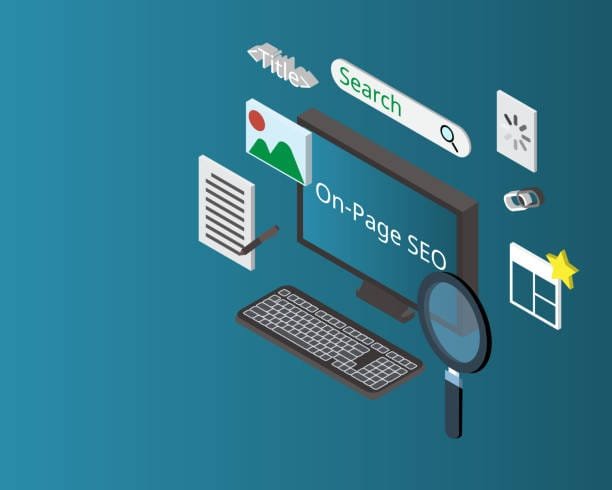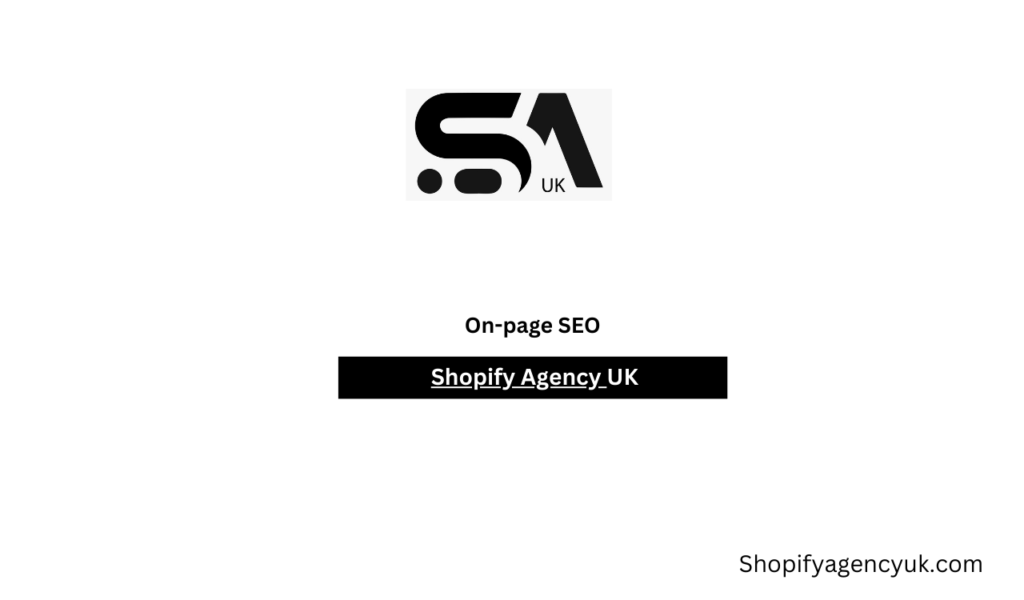Optimizing On-Page SEO for Shopify Stores: Best Practices Revealed
As someone who has dealt with e-commerce and Shopify for quite a long time, I have realized that running a successful store on this platform is not only about displaying products and stocking inventory, but it goes far beyond this.
The e-commerce industry today is characterized by stiff competition, and thus, it is essential to ensure on-page SEO that will increase the possibility of the content reaching the user and guarantee a pleasing user experience.
What is On-Page SEO and Why Does It Matter for Shopify Stores?

On-page SEO refers to the process of modifying single web pages to rank at the top and attract more relevant traffic from search engines. For Shopify, on-page SEO includes refining the different elements of our products and content pages, such as, but not limited to, meta tags, product descriptions, or images, to be search engine-friendly and to accomplish the right keywords.
On-page SEO is important for many reasons, such as launching our website to improve ranking. They are:
- Better Search Visibility: Google uses on-page SEO elements to understand how the search engine extracts and treats our pages, which influences the position of our Shopify Agency in the UK in the search results.
- More User Engagement: On-page SEO is not just for search engines – it is also about improving the overall user experience, thus making it easier for customers to find, navigate, and buy from us.
Best Practices for Optimizing On-Page SEO for Shopify Stores
The best on-page SEO practices we should employ in our Shopify store to boost our SEO performance and excel in the search results are:
1. Optimize Title Tags and Meta Descriptions
Title tags and meta descriptions are on-page SEO elements that considerably benefit any website. It is precisely through these tags that we have a higher click-through rate (CTR).
Focus on High-Quality Product Descriptions
However, product descriptions are not merely for the user to know the details of the product; they play a significant role in our on-page SEO. Products that have compelling descriptions motivate search engines to find out the topic of the page and empower visitors to buy our product.
- Duplicate Content Must Be Avoided: We should write unique and engaging descriptions for all our products, if possible.
- The Keywords Need To Be Used Naturally: Use the relevant keywords precisely in the Text so that they read as if they belong there.
- Don’t Forget to Focus on the Benefits: Discuss the product’s features and benefits, explaining how they help a customer or satisfy his intention.
- To be well-indexed on the search engine in our Shopify store, we should guarantee that we build our URL in a fashion that makes it readable by the search engine. URLs that are self-explanatory and simple to read, and include the necessary keywords in the correct form if possible.
3. Improve URL Structure
-
- Keep URLs Short and Descriptive: Use distant, unrelated URL formats like “shopify.com/collections/organic-skincare” instead of messy link URLs.
- Use Hyphens: When you have URLs, your preference should be for hyphens rather than underscores because search engines can more easily derive meaning from hyphens than underscores.
-
Optimize Images for SEO
Visuals are crucial for any Shopify store; they guide potential shoppers through the buying process by showing them the products. However, significant and poorly optimized images can take up too much space on our website, making search engines less likely to find them and giving a faster user experience.
- Alt Text: The images on our site should always have descriptive alt Text.
Compress Images: If your images are too large to compress, you can use tools like TinyPNG and Shopify’s in-built image optimizer, which can do the magic without the slightest loss in quality.
Use Internal Linking
One of the most hidden strategies of on-page SEO is internal linking. Its potential benefits are enormous, and it can be a big driving force in our store’s success in search engine results. Internal linking allows us to spread our website’s link equity and simplifies user and search engine navigation.
- Linking to Related Products: On product pages, link to related products or those with complementary functions.
Blog Posts: If we have a blog on our Shopify store, we need to create links from the blog to the appropriate product pages.
Fast Page Speed
Google’s statement that the speed of a page has a positive impact on its ranking is a very valid one, and that’s the reason why we need to ensure that there are no slow-loading pages on our website because the slow downloading may lead to both low search engine visibility and user un-friendly experience. Shopify offers competitive solutions to boost our store’s page speed:
- Do Not Install Too Many Apps: It’s better to regularly check and remove any apps that are no longer necessary.
- Leverage Lazy Loading: Ensure images pop in only when visible so the page takes less time to load initially.
- Choose a Fast Theme: Go for a Shopify theme optimized for speed.](Separated)
7. Mobile Optimization is a Must
Given that mobile commerce is on a countless climb and considering what happens with such an indexed website, our customers must be at ease with our store on desktop and mobile devices.
Google has implemented the mobile-first indexing policy, which makes mobile versions more commonly used in indexing and ranking.
- Responsive Design: Our Shopify store should automatically adjust depending on the screen size.
- Simple Navigation: Customers can quickly find the products on their way via mobile.
Schema Markup
Scheme markup takes the form of small data or microdata, which enables the search engine to comprehend our content better and, as a result, creates rich snippets in the search results.

The addition of product schema is really good for Shopify as it is one way the products can be displayed, and one can see the product details such as price, review, and availability in the search results.
- Product Schema: In addition to the option to develop using a prototype of the product schema, Shopify Agency also gives us the opportunity to do it with apps like “JSON-LD for SEO.”
- Review Schema: The review schema is another that can be included. Star ratings will show up on the search page, improving not only the click-through rate but also the users’ trust.
Regularly Update Our Content
Search engine changes, such as the need for fresh content, are not new. If we happen to live in a day and age when search engine algorithms demand regular updates of web pages, we are bound by the laws of SEO that enforce this.
Uploading new content to product pages, blog posts, and web pages is one measure that can improve our on-page SEO.
- Seasonal Updates: Suppose that our products are seasonal. If our products change seasonally, provide product descriptions, titles, and meta descriptions that reflect the current trend or promotions.
- Content Audits: Conduct regular content audits to find pages that can be updated or improved.
Conclusion
After all, in my experience, SEO is the crucial driver of traffic to our Shopify store, improving our search visibility and user experience. Through the optimization of vital elements such as title tags, meta descriptions, product URLs, and images, we can go a long way in improving our website’s performance in search engines.
Remember that the search engine process is ongoing and requires regular reviews, updates, and corrections.
By strictly observing these guidelines, we can confidently expect that our Shopify store will remain a prominent player and attract a big slice of the traffic pie.
